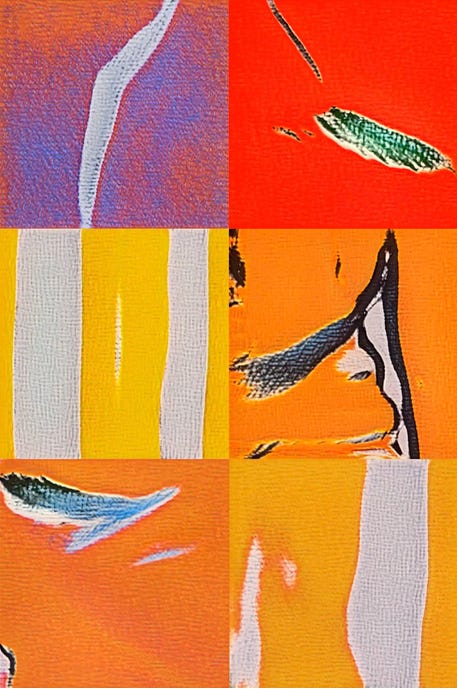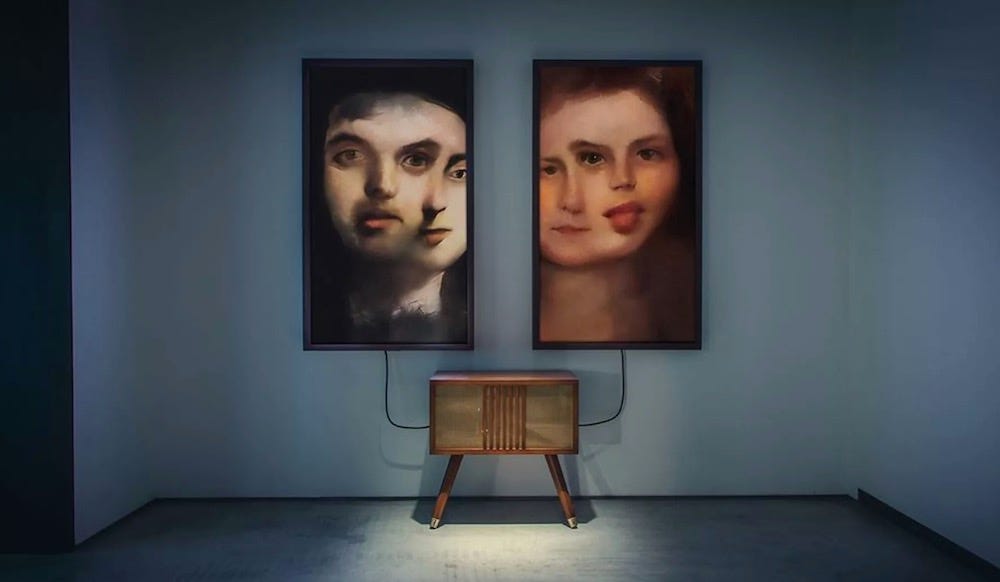Tate Modern, year 2124
A retrospective on the "AI moment"
I recently visited a Tate Modern exhibition titled “Capturing the Moment: A Journey through Painting and Photography”. The Tate website describes it in the following terms: “[t]he arrival of photography changed the course of painting forever. In this unique exhibition, we… discover how artists have blurred the boundaries between painting and photography, creating new and exciting forms of art”.
I propose to fast-forward 100 years and imagine an exhibition dedicated to the relationship between artists and Artificial Intelligence. Some scholars have suggested that the current debate on AI tools reminds of the debates about the invention of photography in the late 19th century: in both cases, artists feared being replaced by a new technology that allows the scale production of (supposed) substitutes of their artworks. Ultimately, however, there is scarce empirical proof that such competition existed; on the contrary, many painters turned photographers and were the most proficient exploiters of the new techniques.
My provocation is: how much of the material from the current Tate exhibition on painting and photography could be reused, with only minor modifications, in an exhibition on AI and traditional arts? I reformulate some of the panels currently displayed (you can find them here), to guide you through the exhibition “Capturing the Moment: A Journey through Art and Artificial Intelligence”, available at Tate Modern in the year 2124.
Room 1: Making Art in the Time of AI
Throughout the 21st century, the idea that human beings are the only ones who can create representations of the world was complicated by artists’ use of AI tools. AI- technologies could create images at a much faster pace than traditional artists. Artists developed new styles and perspectives in response to this challenge, particularly when exploring the human figure.
While AI experimenters grapple with the mechanics of prompting, traditional artists continue to work with the screen of the tablets and the texture of paint. They often want to explore the material possibilities of their medium and create compositions which privilege a “human” creative process over an algorithmic one.
Photography has arrived at a point where it is capable of liberating painting from all literature, from the anecdote, and even from the subject. So shouldn’t painters profit from their newly acquired liberty to do other things?
-Pablo Picasso
Room 2: Traditional arts into AI
The artists in this room draw on the traditions of painting, using the AI prompting to propose new ways of looking. Artists such as Memo Akten and Sougwen Chung manipulate their AI-generated images in different ways to explore the constructed nature of image-making. They question what is a truthful representation of reality. Can an image convey the whole picture?
Room 3: AI works as artworks
Stephanie Dinkins, Sougwen Chung and Anna Ridler show us that the way we produce pictures determines what we perceive and how we experience them. How do we behave when we know that a picture has been produced by an AI or a human being? Does their significance and value change when a picture is generated from a prompt or a person’s creative process? And how do we distinguish the two?
Room 4: Capturing History
In this room, the artists Mario Klingemann and Linda Dounia Rebeiz engage with history, media and memory by making paintings which are copies of AI-generated works. In the act of translation from AI media to painted canvas, harmonies and contradictions emerge between the mediums. We tend to think of AI-generated images as capable of imitating artists’ styles and creative processes. But does the complexity of the AI algorithms obscure and distort as much as it reveals?
Room 5: Convergence
In the 2040s and 50s artists such as Mario Klingemann, Mimi Onuoha, and Sofia Crespo incorporated AI-generated images into their work. This approach of fusing mechanical processes with high art was embraced by artists around the globe, and became known as ‘synthetic’ art.
Artists used screenprinting techniques to appropriate, enlarge and multiply AI-generated material. A mechanical process that subverted concepts of uniqueness and painterly genius, screenprinting mimicked the influx of images and information in an increasingly mediated world.
***
To see how much text has been changed, you can see a comparison here:
This exhibition does not (yet) exist, but the named artists do. You can find their websites here:






